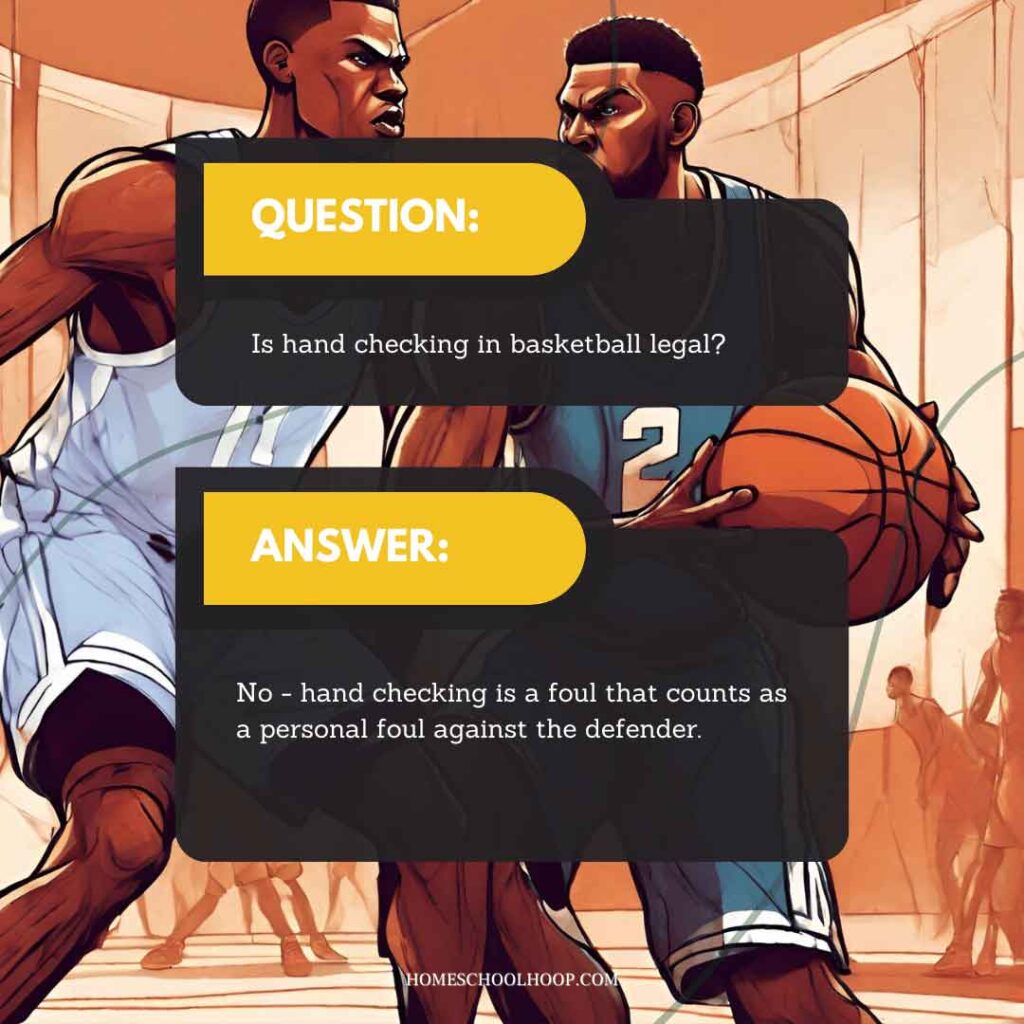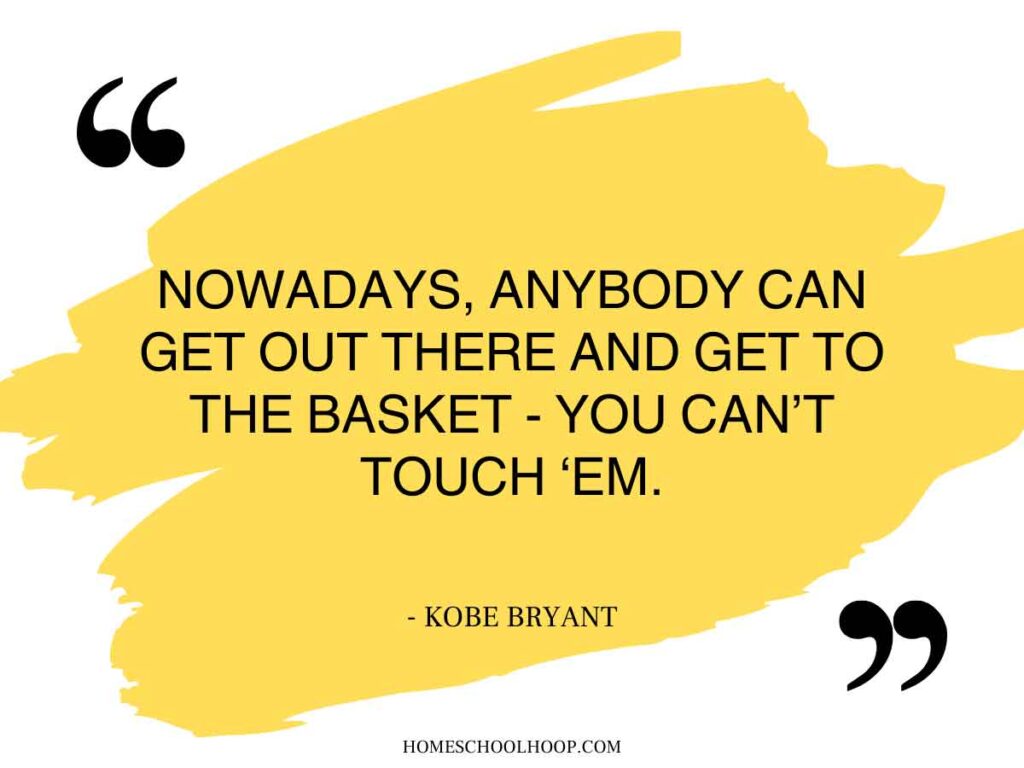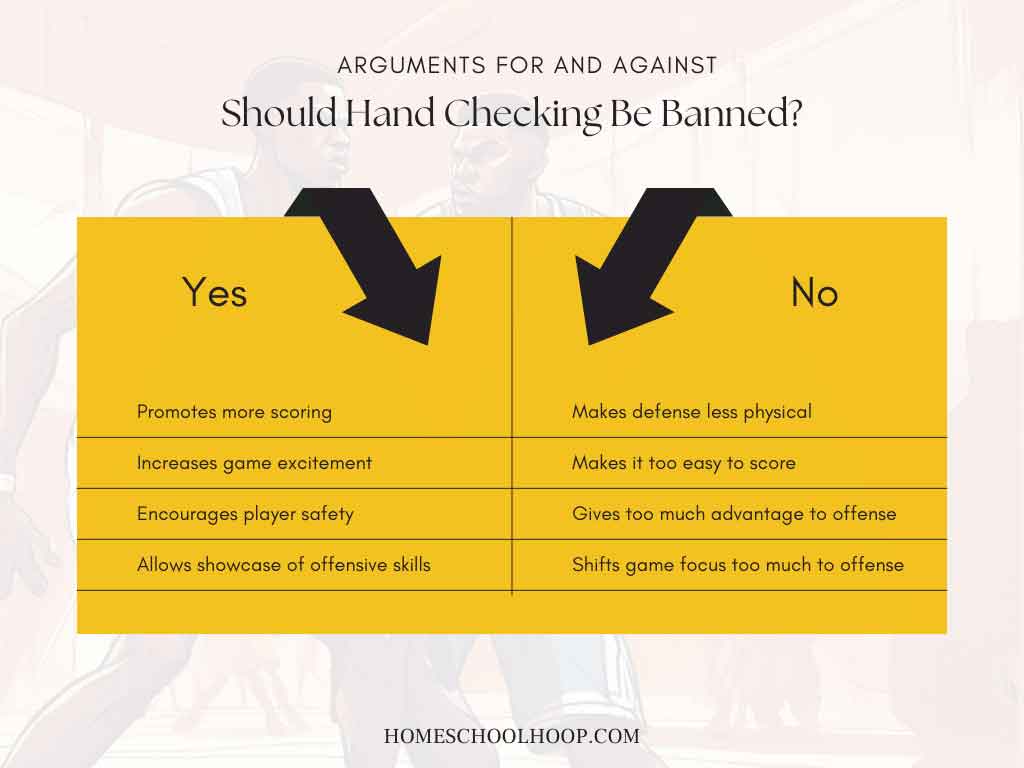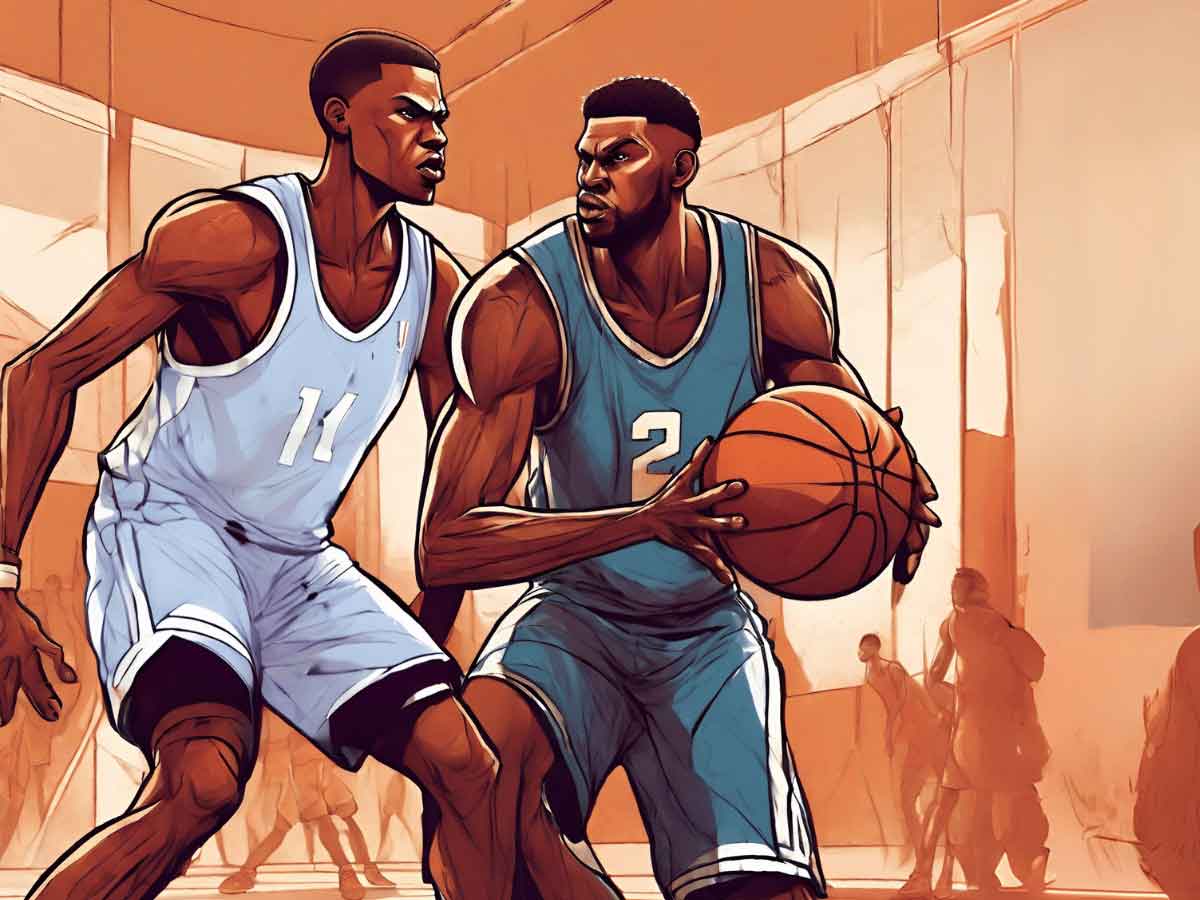In basketball, “hand checking” is a term you’re going to hear during a game. It’s an important illegal form of defense to understand, especially if you’re new to basketball and want to get a grasp of the rules and defensive strategies. Let’s break down the essentials:
Key Takeaways:
- Hand checking in basketball is a defensive penalty: Hand checking is when a player on defense illegally uses their hands to slow down or control where a ball handler is going.
- Rules have changed over time: Leagues like the NBA have modified hand-checking rules. These changes affect how the game is played and encourage player safety.
- The hand-checking ban is an offensive advantage: Defenders are no longer allowed to be as physical, making it easier for offensive players to drive to the basket and get open shots.
The hand-checking penalty is all about how a defender uses their hands against an offensive player. It used to be a common way to defend, but the rules changed in 2004. These changes reshaped how players defend and the overall speed and style of basketball games.
Now, let’s explore hand checking in more depth, including its rules today and how it shapes the way offense and defense are played in basketball.
What is Hand Checking?
Hand checking in basketball is a foul that happens when a defensive player uses their hands or an arm to touch an offensive player who has the ball. This is usually done to control where the offensive player goes.
Hand checking was once an acceptable and common defense method, allowing defenders to place a hand or two on the ball handler to guide or restrict their movement. Now, it’s considered a foul and is called frequently.

Examples of Hand-checking
Here are some clear examples of hand-checking fouls:
- Against a Driving Player: A defender momentarily places both hands against the torso of an offensive player driving to the basket.
- Using an Arm Bar: A defender guides a driving offensive player away from the basket with an arm bar against their side.
- In the Post: A defender places one hand with a bent elbow on the back of an offensive post player with the ball and their back to the basket. (This defense is okay in the NBA and WNBA, but not at the college or high school levels.)
- Multiple Touches: A defender pressuring an offensive ball handler crossing half court briefly places their left hand and then their right hand on their opponent’s torso to restrict their lateral movement.
Hand Checking Result
A hand-checking foul counts as a personal foul against the defender. Too many personal fouls and a player can be disqualified from the game.
What Happens After the Foul:
- The offensive team keeps the ball.
- The shot clock is reset.
- If the offensive team is in a basketball bonus situation, they get free throws.
Hand Checking vs. other Defensive Fouls
Hand-checking often gets confused with similar defensive fouls. Here’s how the foul differs from others:
- Vs. Holding: Holding is grabbing a player or their uniform to impede the ability to move freely. Hand checking is touching without grabbing.
- Vs. Pushing: Pushing means using force to move a player through pushing or bumping. Hand checking is lighter and more about controlling movement.
- Vs. Blocking: A blocking foul in basketball happens when a defender uses their body, not just their hands, to stop an offensive player with the ball.
Learn more: Understanding a charge in basketball
The History of Hand Checking in the NBA
Hand-checking was a common defense tactic in the early years of the NBA. In the past, NBA defenders had more leeway in how they could guard their opponents. They were permitted to lightly touch the player they were defending using their hands. This contact could be on the arm, wrist, or leg, but it wasn’t allowed to be a hold or a grab – just a brief touch.
In 1995, the NBA started to crack down on hand-checking. With Michael Jordan dominating the league and driving in new viewers, the league prohibited hand-checking from the backcourt baseline to the opposite foul line.
Ahead of the 2004-2005 NBA season, the league banned hand-checking completely. These rules still apply today. From that point, any hand contact by a defender on an offensive player is considered a foul.
Contact initiated by the defensive player guarding a player with the ball is not legal. This contact includes, but is not limited to, forearm, hands, or body check.
NBA Official
The NBA made these hand-check rule changes to open up the game for the league’s dominating offensive players, giving them more opportunities to freely move about and take open shots.
The Impact of Hand-Checking Rule Changes
In 2004, the NBA decided to ban hand-checking, leading to major changes in both defense and offense. This meant defenders couldn’t use their physical strength in the same way they used to. The game started to focus more on quick movements and smart plays instead of just physical contact.
These changes in 2004-2005 didn’t just affect individual players; they completely changed how the NBA is played. The fast, skill-based game we see today came from these important rule changes.
The NBA’s stance on hand-checking has significantly influenced other basketball leagues. The WNBA, NCAA, and even high school basketball have all followed suit, adopting similar rules regarding hand-checking.

Gameplay Pace and Scoring Changes
Getting rid of hand-checking led to a quicker game. Before, defenders could use this method to slow down players with the ball.
Now, offensive players, especially guards, had more room to move freely. This led to more scoring since players could navigate the court with less physical resistance stopping them.
Shift in Player Strategies
The change in hand-checking rules also had a big effect on how players approached the game. Guards like Steve Nash and Stephen Curry became more dangerous, using their speed and skills without hand-checking holding them back.
This also changed who typically won MVP awards. Before, big players like Tim Duncan and Shaquille O’Neal often got these awards. After the rule change, it was more often players who played on the outside and were known for their scoring.
Big players found it harder to be as influential in games. Not as many of them made it far in the playoffs compared to guards, a big change from before the rule adjustment when the tallest NBA players were common in playoff games.
Effect on Defensive Play
With hand-checking gone, the physical aspect of the game, particularly on the outside, was reduced. Defenders had to focus more on being quick and thinking strategically, instead of just using their size and strength.
Kenny Smith, a former NBA guard, explains this change in physicality well in a segment on Inside The NBA.
Learn more: What is traveling in basketball?
Controversies and Debates Surrounding Hand-Checking
The NBA’s decision to ban hand-checking has led to various debates and controversies. While the rule change altered the game, people are divided on whether it’s for better or worse. Many fans aren’t fond of hand-check calls, often seeing them as unnecessary interruptions and a “soft” foul.

Arguments For the Hand Check Ban
The leagues see the hand-check ban as a positive move. Here’s why they support penalizing hand checks:
- More Scoring: The ban leads to more scoring, which makes games more exciting for fans.
- Player Safety: It reduces physical contact and helps prevent injuries.
- Skill Showcase: It allows players to showcase their skills more, especially quick, explosive guards.
Arguments Against the Hand Check Ban
Former NBA and college basketball players who played before the ban don’t like it. It’s got to be frustrating to see current players breaking offensive records more easily.
Their concerns about the hand-check calls include:
- Less Physical Defense: The ban has made defense less physical, taking away a key part of the game.
- Unbalanced Advantage: It gives too much advantage to offensive players, making it harder to defend effectively.
- Change in Game Dynamics: The rule change has shifted the game’s focus too heavily toward offense, affecting the traditional balance between offense and defense.
Learn more: What is a scrimmage in basketball?
FAQs About Hand Checking in Basketball
What is hand checking in basketball?
Hand checking is when a defender illegally uses their hand or arm to touch or control an offensive player’s movement. It’s a personal foul.
When was hand checking banned in the NBA?
Hand-checking was banned in the NBA before the 2004-2005 season. This was done to increase scoring and reduce physical play.
Is body checking legal in basketball?
No, body checking is not legal in basketball. It’s considered a foul because it involves using the body to block or impede an opponent’s movement.
What rules did the NBA change for Jordan?
The NBA didn’t technically change rules specifically for Michael Jordan. However, rule changes in the late 1980s and 1990s, like starting to penalize hand-checking, helped offensive players like Jordan by reducing physical defense.
How does hand-checking impact a basketball game?
Hand-checking slows down offensive players and makes scoring harder, but it’s no longer allowed. Its ban led to faster gameplay and more scoring.
How do referees call hand-checking in games?
Referees call hand-checking when they see a defender using their hands to control or impede an offensive player’s movement. It’s often a judgment call.
Could hand-checking ever make a comeback?
A hand-checking comeback is unlikely as the NBA currently prefers a faster, more offensive game.


